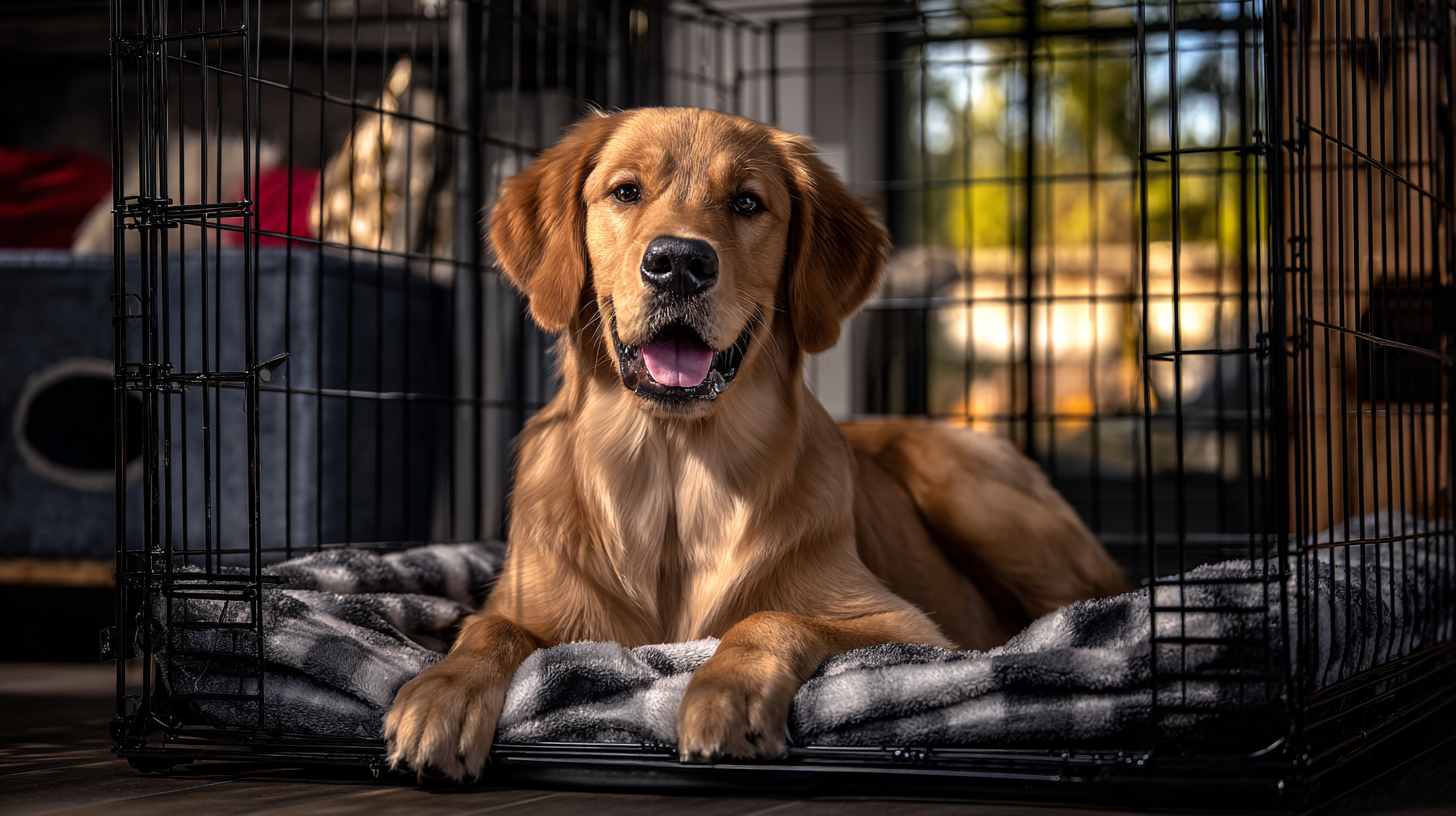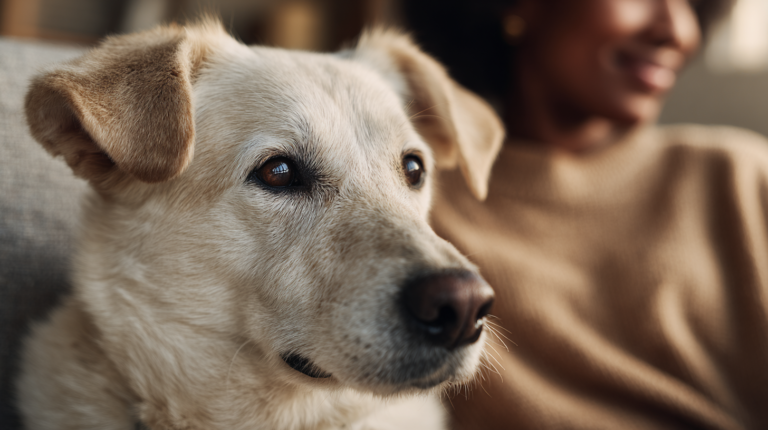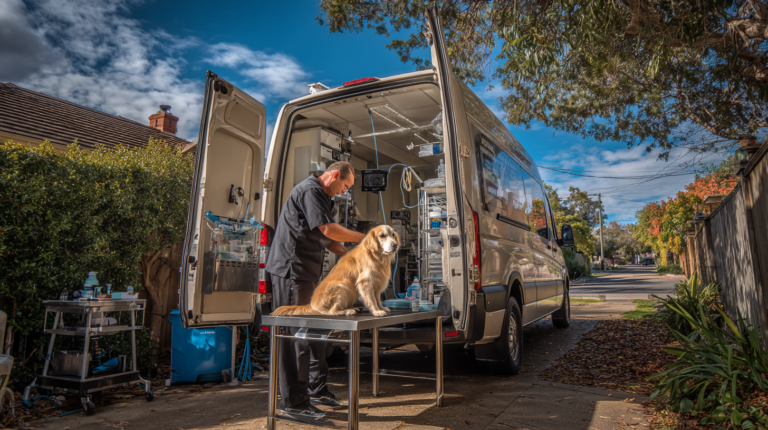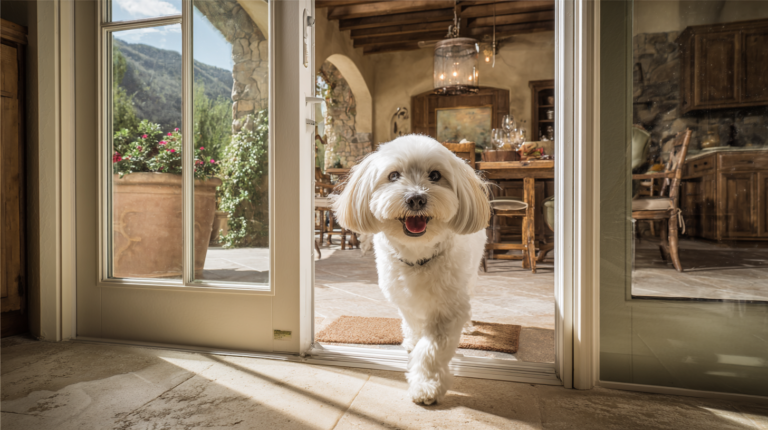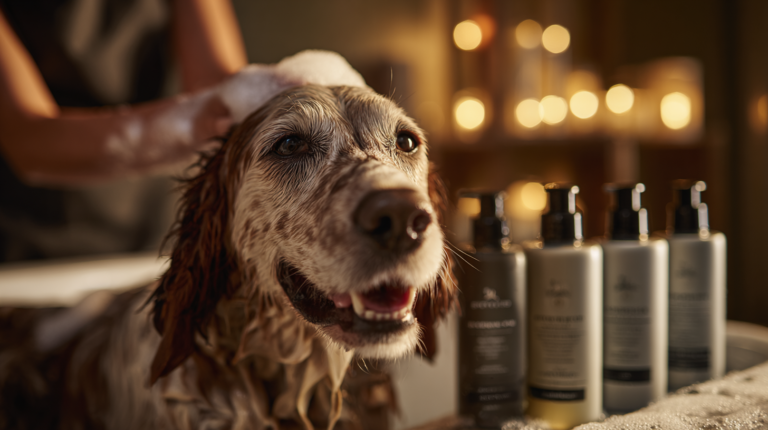Find the perfect dog crates crate size for your furry friend with our comprehensive guide. Expert tips on measuring, sizing, and choosing the ideal crate for comfort and safety.
Table of Contents
Choosing the right dog crates crate can feel overwhelming with countless options available in today’s pet market. Whether you’re a first-time dog owner or adding a new furry family member to your household, selecting the perfect crate size is crucial for your pet’s comfort, safety, and overall well-being. A properly sized crate serves as your dog’s personal sanctuary, aids in house training, and provides security during travel or stressful situations.
The importance of crate sizing cannot be overstated. According to the American Kennel Club, over 68% of dog owners use crates regularly, yet nearly 40% admit they’re unsure if they’ve chosen the correct size. This comprehensive guide will walk you through everything you need to know about dog crates crate sizing, from measuring your dog accurately to understanding breed-specific requirements.
Understanding Dog Crate Fundamentals
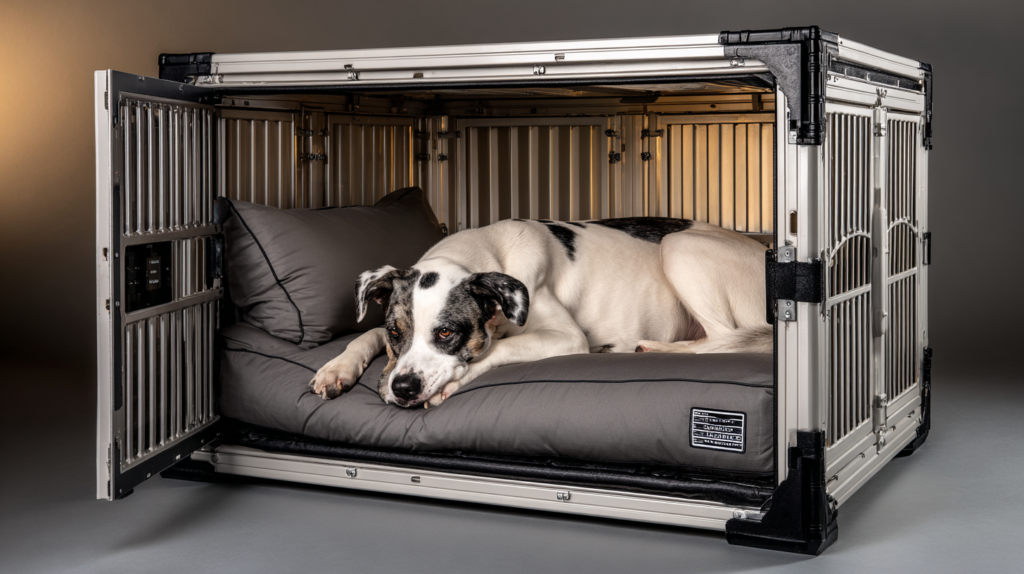
What Makes a Crate the Right Size?
The perfect dog crates crate should allow your pet to stand up comfortably, turn around easily, and lie down with their legs extended. However, it shouldn’t be so large that your dog can eliminate in one corner and sleep in another, as this defeats the purpose of crate training and natural den instincts.
Professional dog trainers emphasize that dogs are naturally den animals who seek out small, secure spaces for comfort. Dr. Patricia McConnell, a renowned animal behaviorist, states that “a properly sized crate mimics the natural den environment dogs instinctively crave, promoting better sleep patterns and reducing anxiety levels.”
Common Crate Sizing Mistakes
Many pet owners make critical errors when selecting crate sizes:
- Buying too large initially: Thinking ahead is good, but puppies need appropriately sized spaces for effective house training
- Ignoring breed-specific needs: Different breeds have varying proportions that affect crate requirements
- Forgetting about growth spurts: Rapid growth periods can quickly make a crate obsolete
- Overlooking accessories: Bedding, toys, and water bowls take up valuable space
The 9 Perfect Dog Crate Sizes Explained

Size 1: Extra Small (18″ L x 12″ W x 14″ H)
Best for: Toy breeds weighing 1-10 pounds Ideal breeds: Chihuahuas, Yorkshire Terriers, Maltese, Pomeranians
Extra small crates provide intimate spaces for the tiniest companions. These dog crates crate options work perfectly for adult toy breeds and very young puppies of larger breeds during their first few weeks home.
Key considerations:
- Perfect for dogs under 10 pounds
- Excellent for apartment living
- Ideal for travel and car safety
- May need upgrading quickly for growing puppies
Size 2: Small (24″ L x 18″ W x 19″ H)
Best for: Small breeds weighing 11-25 pounds Ideal breeds: Jack Russell Terriers, Pugs, Shih Tzus, Cavalier King Charles Spaniels
Small crates offer the sweet spot for many popular companion breeds. This size accommodates most small adult dogs comfortably while remaining manageable for homeowners with limited space.
Key considerations:
- Suitable for dogs 11-25 pounds
- Great for crate training small breed puppies
- Easy to move and transport
- Perfect size for most small breed adults
Size 3: Medium (30″ L x 19″ W x 21″ H)
Best for: Medium breeds weighing 26-40 pounds Ideal breeds: Cocker Spaniels, Border Collies, Australian Cattle Dogs, Whippets
Medium crates represent the most popular size category, accommodating a wide range of beloved family breeds. These dog crates crate dimensions work well for dogs transitioning from puppyhood to adulthood in medium-sized breeds.
Key considerations:
- Perfect for dogs 26-40 pounds
- Versatile size for many breed types
- Good balance of comfort and space efficiency
- Suitable for most home environments
Size 4: Intermediate (36″ L x 23″ W x 25″ H)
Best for: Larger medium breeds weighing 41-70 pounds Ideal breeds: Bulldogs, Basset Hounds, Standard Poodles, Brittany Spaniels
Intermediate sizes bridge the gap between medium and large, perfect for dogs that don’t quite fit standard categories. This size works exceptionally well for stockier breeds or tall, lean dogs.
Key considerations:
- Ideal for dogs 41-70 pounds
- Great for breeds with unique proportions
- Accommodates bulkier or taller medium breeds
- Provides extra comfort without excessive space
Size 5: Large (42″ L x 28″ W x 30″ H)
Best for: Large breeds weighing 71-90 pounds Ideal breeds: German Shepherds, Golden Retrievers, Labrador Retrievers, Boxers
Large crates satisfy the needs of popular family dogs and working breeds. These dog crates crate dimensions provide ample space for active, medium-to-large breeds while maintaining appropriate boundaries for house training.
Key considerations:
- Perfect for dogs 71-90 pounds
- Suitable for most popular family breeds
- Provides comfort for active, larger dogs
- Still manageable for most homes
Size 6: Extra Large (48″ L x 30″ W x 33″ H)
Best for: Extra large breeds weighing 91-110 pounds Ideal breeds: Rottweilers, Great Danes, Saint Bernards, Mastiffs
Extra large crates accommodate gentle giants and working breeds that need substantial space. These sizes require careful consideration of home layout and transportation needs.
Key considerations:
- Ideal for dogs 91-110 pounds
- Necessary for giant breed comfort
- Requires significant floor space
- May need special transportation arrangements
Size 7: XXL (54″ L x 35″ W x 45″ H)
Best for: Giant breeds weighing 111-125 pounds Ideal breeds: Great Pyrenees, Newfoundlands, Irish Wolfhounds, English Mastiffs
XXL crates serve the largest canine companions, providing cathedral-like spaces for dogs that tower over their human families. These dog crates crate options require serious space planning but offer unmatched comfort for giant breeds.
Key considerations:
- Perfect for dogs 111-125 pounds
- Essential for giant breed happiness
- Requires dedicated space planning
- Investment in specialized transportation
Size 8: Custom Large (60″ L x 36″ W x 48″ H)
Best for: Exceptionally large breeds weighing 126-150 pounds Ideal breeds: Tibetan Mastiffs, Leonbergers, Great Danes (extra tall), Saint Bernards (extra large)
Custom large sizes cater to the most substantial dogs, often requiring special ordering or custom fabrication. These dimensions ensure even the largest dogs enjoy proper crate comfort.
Key considerations:
- Suitable for dogs 126-150 pounds
- Often requires custom ordering
- Significant space and budget investment
- May need professional installation
Size 9: Giant/Custom (60″+ L x 40″+ W x 50″+ H)
Best for: Exceptionally large or custom needs Ideal breeds: Extremely large specimens, multiple small dogs, special needs dogs
Giant and custom sizes address unique situations, including exceptionally large individual dogs, multiple dog households, or dogs with special mobility needs requiring extra accommodation.
Key considerations:
- For dogs over 150 pounds or special circumstances
- Usually custom-made solutions
- Requires professional consultation
- Significant investment in space and budget
Measuring Your Dog for the Perfect Crate
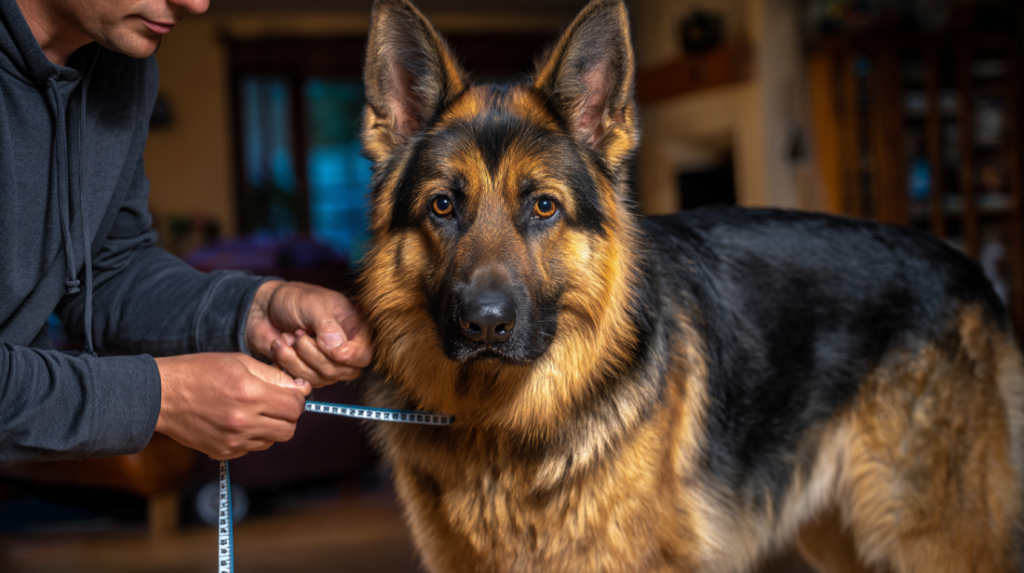
Essential Measurements
Accurate measurements ensure your dog crates crate selection provides optimal comfort and functionality. You’ll need three key measurements:
Length: Measure from your dog’s nose to the base of their tail (not including the tail length) Height: Measure from the floor to the top of your dog’s head when standing normally Width: Measure across your dog’s shoulders at their widest point
The 2-4 Inch Rule
Professional dog trainers recommend adding 2-4 inches to each measurement to ensure comfortable movement. This extra space allows for:
- Natural stretching and position changes
- Comfortable standing without head contact
- Easy turning and lying down
- Room for essential accessories
Measuring Growing Puppies
Puppies present unique challenges since they’re constantly growing. Research your breed’s adult size expectations and consider:
- Average adult weight for your specific breed
- Growth rate patterns (rapid vs. gradual)
- Individual genetics and family history
- Divider panel options for adjustable sizing
Breed-Specific Crate Considerations
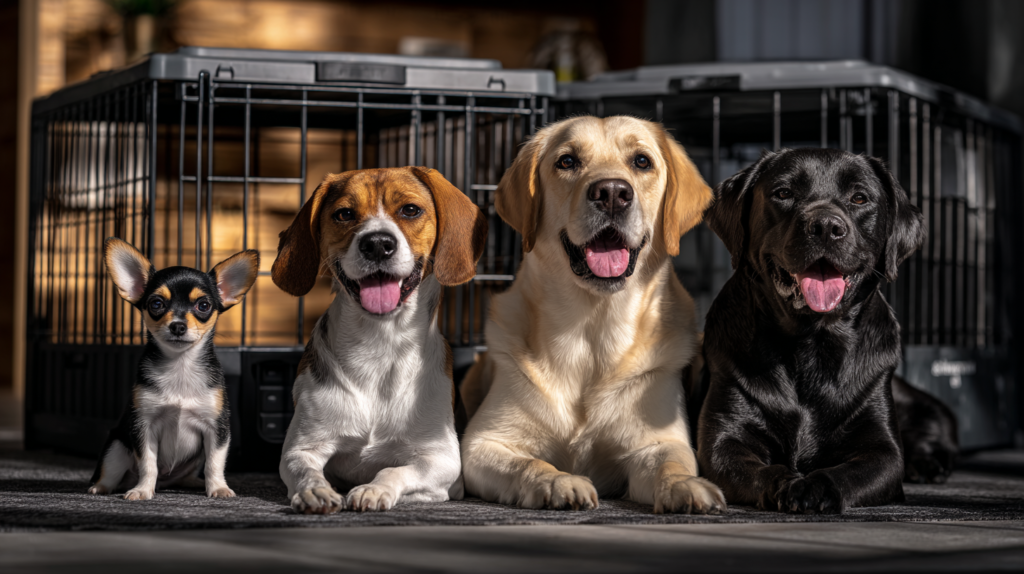
Short-Legged Breeds
Breeds like Dachshunds, Basset Hounds, and Corgis require special attention to length rather than height. Their unique proportions mean standard sizing charts may not apply directly.
Special considerations:
- Prioritize length over height
- Ensure easy entry and exit
- Consider orthopedic support for long backs
- Monitor for joint stress during crate use
Tall, Lean Breeds
Greyhounds, Whippets, and similar sighthounds need extra height consideration despite their lean builds. Their long legs and elegant necks require adequate vertical space.
Special considerations:
- Prioritize height measurements
- Ensure comfortable lying positions
- Consider temperature regulation needs
- Provide adequate cushioning for bony joints
Brachycephalic (Flat-Faced) Breeds
Bulldogs, Pugs, and other flat-faced breeds have unique respiratory considerations that affect crate selection and use.
Special considerations:
- Ensure excellent ventilation
- Avoid overheating conditions
- Monitor for breathing difficulties
- Consider crate placement away from heat sources
Crate Materials and Construction Quality
Wire Crates
Wire dog crates crate options offer excellent ventilation and visibility, making them popular for home use. They’re typically collapsible for storage and transport.
Advantages:
- Superior airflow and ventilation
- Easy cleaning and maintenance
- Collapsible for storage
- Good visibility for anxious dogs
Disadvantages:
- Can be noisy during use
- May not provide enough security for anxious dogs
- Potential for injury if poorly constructed
- Limited insulation properties
Plastic Crates
Plastic crates provide more den-like environments and are often required for air travel. They offer better security for anxious dogs but may have ventilation limitations.
Advantages:
- Airline-approved designs available
- More secure, den-like feeling
- Easier to clean thoroughly
- Better for shy or anxious dogs
Disadvantages:
- Limited ventilation compared to wire
- Heavier and less portable
- Can retain odors if not cleaned properly
- May cause overheating in warm conditions
Soft-Sided Crates
Fabric crates offer portability and lightweight options but are suitable only for well-trained, non-destructive dogs. They’re excellent for travel and temporary use.
Advantages:
- Extremely lightweight and portable
- Easy setup and breakdown
- Comfortable, home-like appearance
- Ideal for travel and temporary use
Disadvantages:
- Not suitable for destructive dogs
- Limited durability and lifespan
- May not contain determined escape artists
- Difficult to clean thoroughly
Advanced Crate Features and Accessories
Divider Panels
Adjustable divider panels allow dog crates crate sizes to grow with your puppy, making them cost-effective long-term investments.
Benefits:
- Accommodates growth without replacement
- Maintains appropriate sizing for house training
- Reduces overall crate investment costs
- Provides flexibility for changing needs
Double Door Access
Crates with multiple access points offer convenience and flexibility in home placement and use.
Advantages:
- Easier home placement options
- Convenient access from multiple angles
- Better for crate training reluctant dogs
- Improved emergency access if needed
Removable Trays
Slide-out bottom trays simplify cleaning and maintenance, crucial for house training success and general hygiene.
Benefits:
- Easy cleaning without moving the entire crate
- Quick accident cleanup
- Better hygiene maintenance
- Reduces bacterial and odor buildup
Installation and Placement Tips
Optimal Crate Placement
Location significantly impacts your dog’s crate experience and your training success. Consider these factors:
Living room placement: Keeps dogs involved in family activities while maintaining boundaries Bedroom placement: Provides nighttime security and reduces separation anxiety Kitchen placement: Convenient for feeding routines and easy cleanup Basement/garage placement: Generally not recommended due to isolation and temperature concerns
Safety Considerations
Proper installation prevents accidents and ensures long-term success:
- Ensure level, stable placement
- Remove potential hazards from the surrounding area
- Provide adequate ventilation around the crate
- Check regularly for wear and damage
- Secure loose parts and hardware
Climate Control
Temperature regulation affects your dog’s comfort and safety in their dog crates crate:
- Avoid direct sunlight placement
- Ensure adequate air circulation
- Consider seasonal temperature changes
- Monitor for overheating signs
- Provide appropriate bedding for insulation
House Training Integration
Crate Training Timeline
Successful crate training typically follows predictable stages:
Week 1-2: Introduction and positive association building Week 3-4: Gradual duration increases and routine establishment Week 5-8: Longer periods and overnight stays Week 9+: Full integration and reliable use
Size Impact on Training Success
Proper dog crates crate sizing directly affects house training effectiveness:
- Too large: Dogs may eliminate in one corner
- Too small: Creates discomfort and anxiety
- Just right: Promotes natural cleanliness instincts
- Adjustable: Grows with your dog’s development
Common Training Challenges
Address these frequent issues for better success:
- Whining and crying: Often indicates size discomfort or anxiety
- Elimination accidents: May suggest oversizing or insufficient breaks
- Destructive behavior: Could indicate anxiety or inadequate sizing
- Refusal to enter: Might require positive association rebuilding
Travel and Portability Considerations
Car Travel Safety
Your dog crates crate choice affects vehicle safety and legal compliance:
- Secure attachment prevents dangerous movement
- Proper sizing ensures airbag safety
- Ventilation prevents overheating during travel
- Easy removal allows for rest stops
Air Travel Requirements
Airlines have specific regulations for pet crates:
- IATA-approved construction standards
- Specific size limitations for cabin vs. cargo
- Ventilation and security requirements
- Documentation and labeling needs
Camping and Outdoor Adventures
Portable crating needs for outdoor activities:
- Weather resistance and durability
- Easy setup and breakdown
- Secure anchoring options
- Wildlife protection considerations
Cost Analysis and Value Considerations
Initial Investment Breakdown
Budget options ($30-80): Basic wire or plastic crates suitable for temporary use or small dogs Mid-range options ($80-200): Quality construction with useful features for most families Premium options ($200-500+): Furniture-quality, specialized, or custom solutions
Long-term Value Factors
Consider these elements when evaluating dog crates crate investments:
- Durability and expected lifespan
- Adjustability for growing dogs
- Resale value and transferability
- Warranty and manufacturer support
Hidden Costs
Budget for additional expenses:
- Replacement parts and accessories
- Professional assembly or installation
- Transportation and delivery fees
- Cleaning supplies and maintenance products
Maintenance and Longevity Tips
Regular Cleaning Protocols
Maintain hygiene and extend crate life:
- Daily spot cleaning for accidents
- Weekly thorough cleaning and disinfection
- Monthly deep cleaning and inspection
- Seasonal maintenance and part replacement
Wear Pattern Monitoring
Watch for signs requiring attention:
- Loose bolts or connections
- Rust or corrosion development
- Fabric wear or tears
- Door mechanism problems
Replacement Indicators
Know when it’s time for a new dog crates crate:
- Safety compromises from damage
- Size changes due to growth
- Behavioral changes indicating discomfort
- Hygiene issues that can’t be resolved
Special Needs and Senior Dog Considerations
Mobility-Impaired Dogs
Dogs with physical limitations require special accommodation:
- Lower entry heights for easy access
- Orthopedic support and cushioning
- Wider doors for mobility aid accommodation
- Non-slip surfaces for stability
Senior Dog Comfort
Aging dogs have changing needs:
- Softer surfaces for joint comfort
- Easy access without jumping or climbing
- Temperature regulation for comfort
- Familiar scents and objects for security
Multiple Dog Households
Managing several dogs requires planning:
- Individual vs. shared crating decisions
- Size considerations for pack dynamics
- Resource guarding prevention
- Space efficiency in your home
Expert Recommendations and Professional Insights
Veterinarian Perspectives
Dr. Sarah Mitchell, DVM, recommends considering your dog’s entire lifestyle: “The perfect crate size supports not just physical comfort but psychological well-being. Dogs should view their crate as a safe haven, not a prison.”
Professional Trainer Insights
Certified dog trainer Mark Johnson emphasizes consistency: “Success with dog crates crate training depends more on proper sizing and consistent use than expensive features. A properly sized basic crate outperforms a luxury crate that’s too large.”
Behaviorist Recommendations
Animal behaviorist Dr. Lisa Chen notes: Crate anxiety often stems from improper sizing rather than inherent crate aversion. Most dogs adapt quickly to appropriately sized spaces that meet their natural denning instincts.
Troubleshooting Common Problems
Size-Related Issues
Identify and resolve sizing problems:
- Excessive panting: May indicate overheating from poor ventilation or anxiety from too-small spaces
- Reluctance to enter: Often suggests negative associations or uncomfortable sizing
- Destructive behavior: Can indicate anxiety from improper sizing or insufficient mental stimulation
- Elimination accidents: Usually points to oversized crates or insufficient bathroom breaks
Behavioral Solutions
Address common crate-related behaviors:
- Whining: Gradually increase crate time and ensure comfort
- Scratching: Check for proper sizing and add comfortable bedding
- Escape attempts: Ensure proper sizing and positive associations
- Resource guarding: Provide adequate space for food, water, and toys
Environmental Adjustments
Modify surroundings for better success:
- Temperature control: Ensure appropriate climate year-round
- Noise reduction: Place crates away from high-traffic areas
- Visual barriers: Use covers for anxious dogs needing security
- Family integration: Position crates to maintain social connections
For more expert pet care tips and product recommendations, visit BlithePet.com — your trusted source for pet wellness.
Frequently Asked Questions
How do I know if my dog crate is too small?
Signs your dog crates crate is too small include your dog unable to stand without hunching, difficulty turning around, reluctance to enter, or signs of stress like excessive panting or whining. Your dog should be able to stand, turn around, and lie down comfortably with legs extended.
Can I use a larger crate for faster house training?
No, larger crates actually slow house training progress. Dogs instinctively avoid eliminating in their sleeping area, but if the crate is too large, they can eliminate in one corner and sleep in another. The crate should be just large enough for comfort but not so large that it defeats natural cleanliness instincts.
How often should I upgrade my puppy’s crate size?
Most puppies need 2-3 crate size changes during their first year, depending on their breed and growth rate. Monitor your puppy monthly and upgrade when they begin to look cramped or struggle with basic movements. Consider crates with divider panels to adjust size gradually.
What’s the difference between airline-approved and regular crates?
Airline-approved crates meet specific IATA (International Air Transport Association) standards for ventilation, construction materials, door security, and labeling. They’re typically made of rigid plastic with secure locking mechanisms and adequate ventilation holes. Regular crates may not meet these safety standards for air travel.
Should senior dogs have different crate requirements?
Yes, senior dogs often benefit from modifications like orthopedic bedding for joint support, lower entry heights for easier access, and consistent temperature control for comfort. They may also prefer familiar scents and objects in their crate for security as their senses change with age.
Can multiple dogs share one large crate?
While possible, it’s generally not recommended unless the dogs are very bonded and you’ve tested their compatibility thoroughly. Separate crates prevent resource guarding, ensure individual comfort, and provide personal space for each dog. If sharing is necessary, ensure the crate is large enough for both dogs to stand, turn, and lie down without crowding.
Conclusion
Selecting the perfect dog crates crate size involves careful consideration of your dog’s current needs, future growth, breed characteristics, and lifestyle requirements. The nine size categories outlined in this guide provide comprehensive options for every dog, from tiny Chihuahuas to gentle giant breeds.
Remember that proper sizing directly impacts your dog’s comfort, your training success, and your pet’s overall well-being. Take accurate measurements, consider your dog’s unique proportions, and don’t hesitate to consult with professionals when making this important decision.
The investment in a properly sized crate pays dividends in successful house training, reduced anxiety, improved behavior, and enhanced safety for your beloved companion. Whether you choose wire, plastic, or soft-sided construction, prioritize your dog’s comfort and security above all other considerations.
Your dog crates crate should serve as a peaceful retreat where your dog feels safe, secure, and comfortable for years to come. With the information provided in this comprehensive guide, you’re well-equipped to make an informed decision that benefits both you and your furry family member.
Have a similar experience with your pet? Share it in the comments below!

